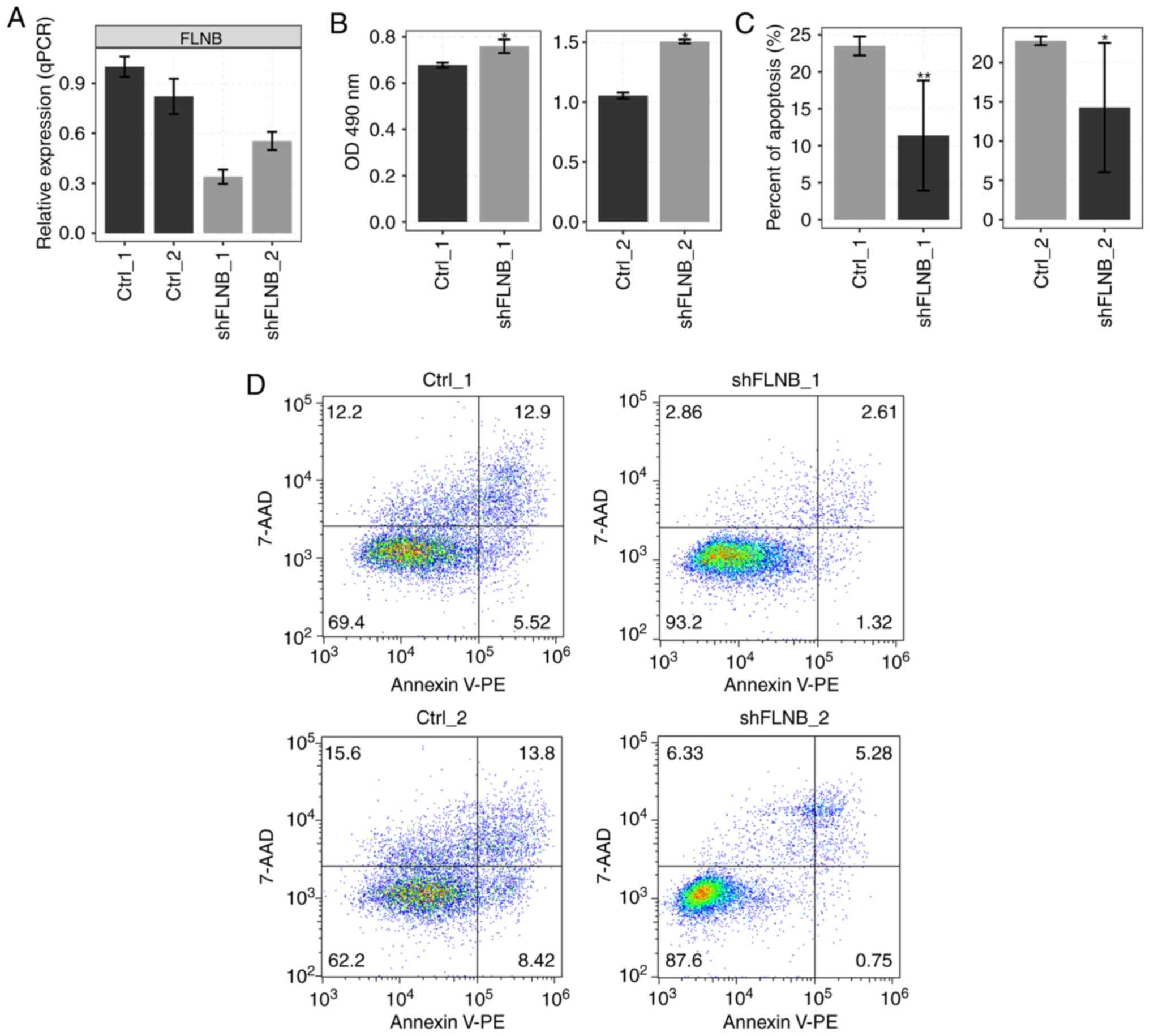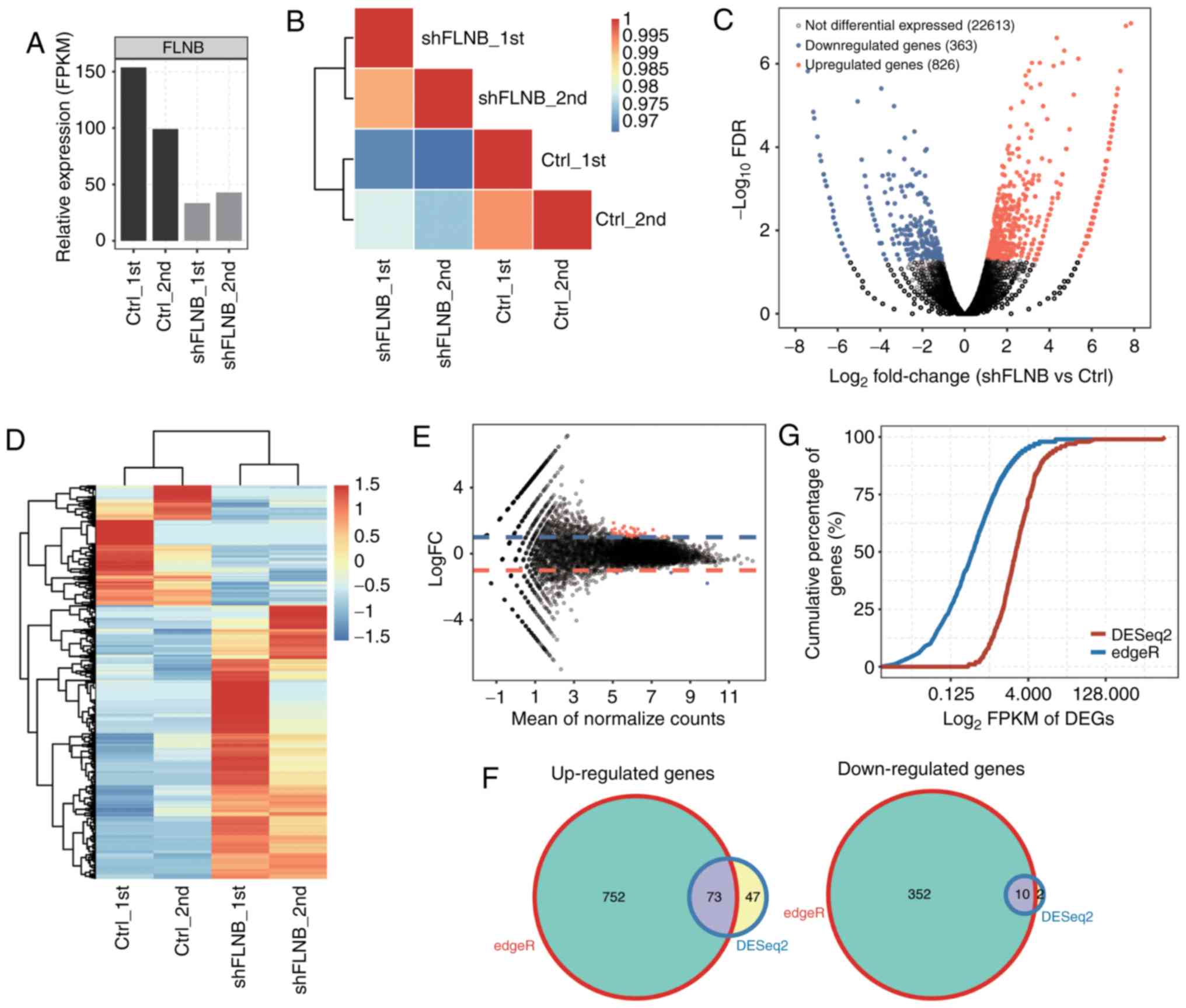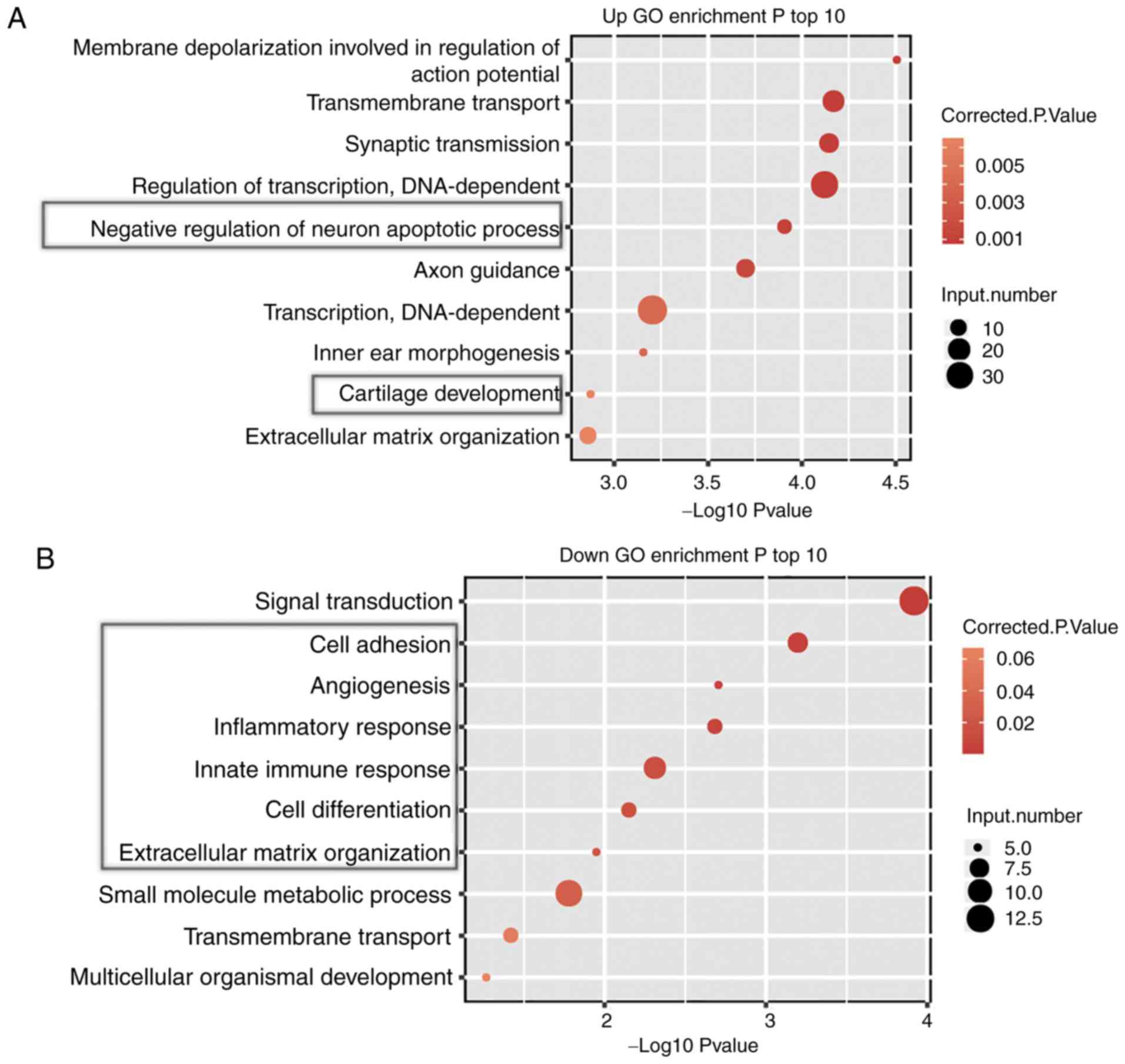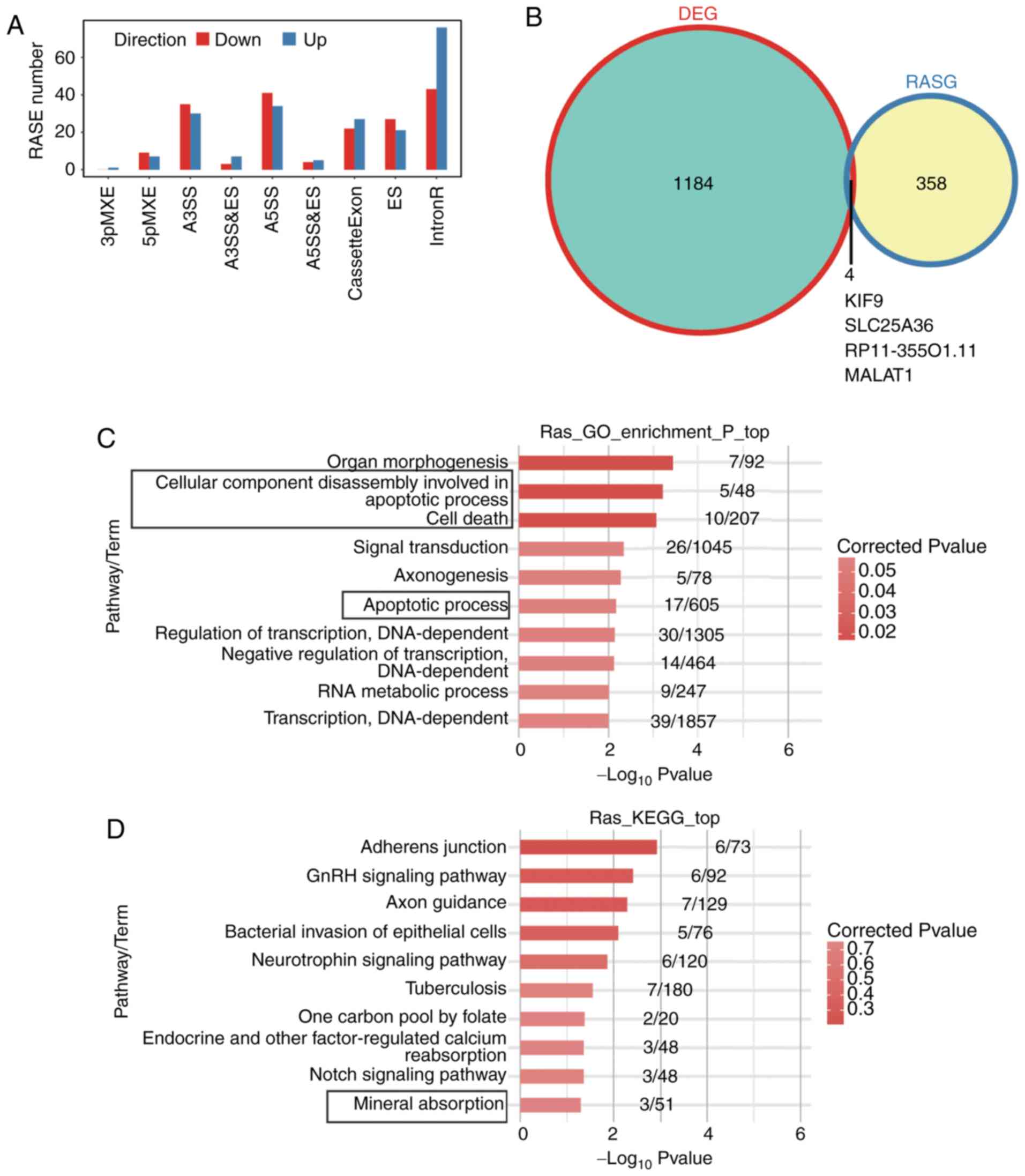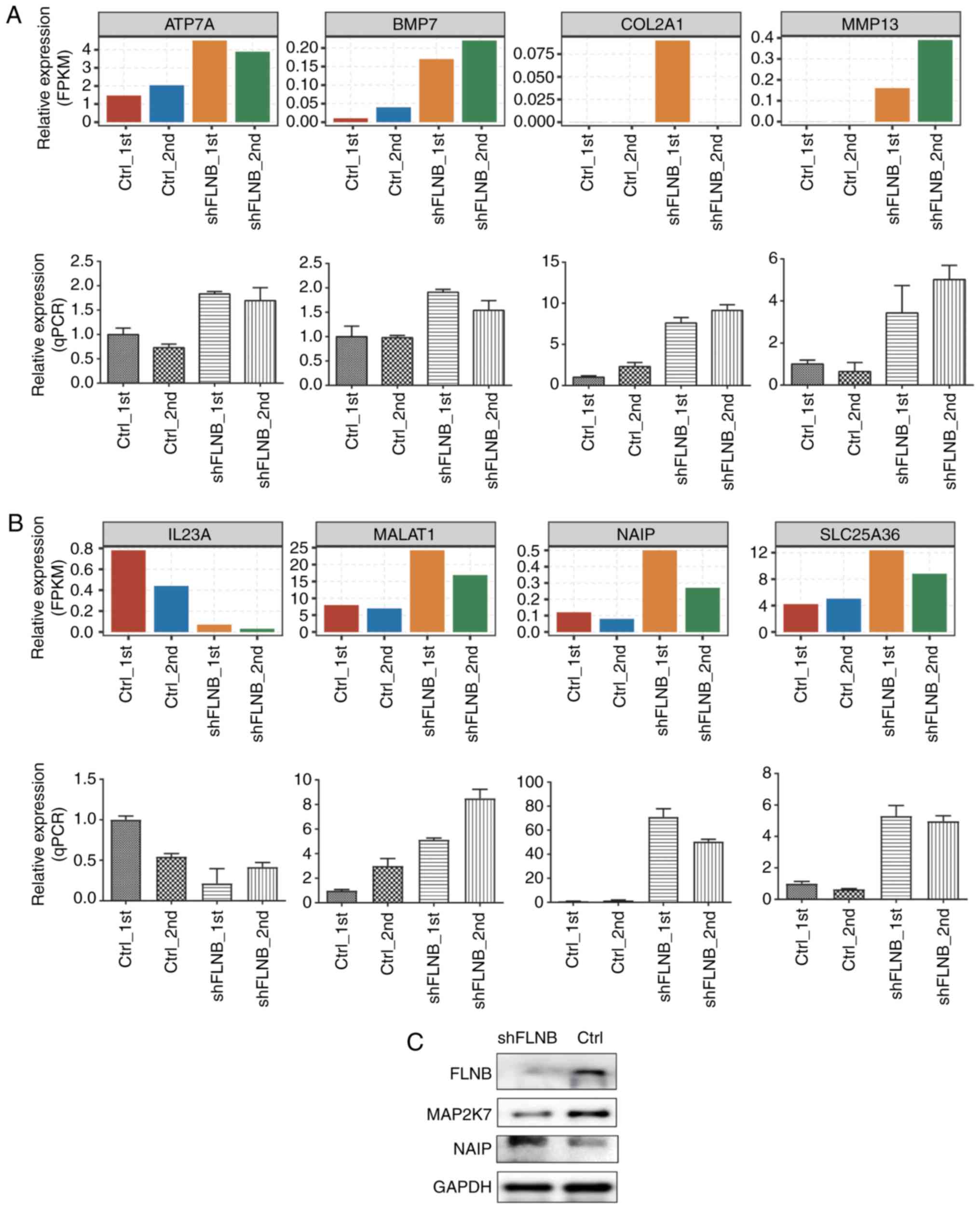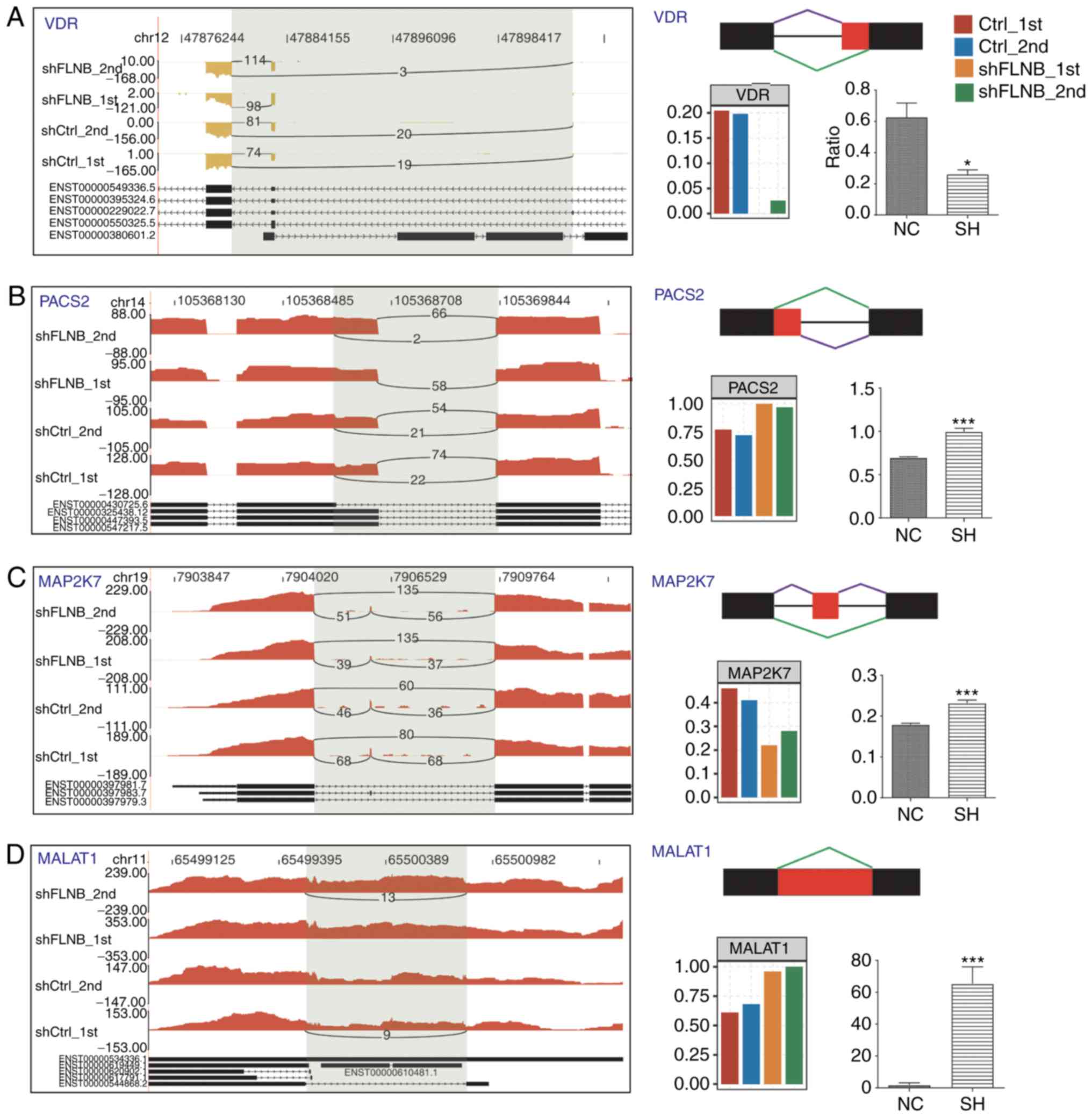|
1
|
Takafuta T, Wu G, Murphy GF and Shapiro
SS: Human beta-filamin is a new protein that interacts with the
cytoplasmic tail of glycoprotein Ibalpha. J Biol Chem.
273:17531–17538. 1998. View Article : Google Scholar : PubMed/NCBI
|
|
2
|
Brocker F, Bardenheuer W, Vieten L,
Jülicher K, Werner N, Marquitan G, Michael D, Opalka B and Schütte
J: Assignment of human filamin gene FLNB to human chromosome band
3p14.3 and identification of YACs containing the complete FLNB
transcribed region. Cytogenet Cell Genet. 85:267–268. 1999.
View Article : Google Scholar : PubMed/NCBI
|
|
3
|
Stossel TP, Condeelis J, Cooley L, Hartwig
JH, Noegel A, Schleicher M and Shapiro SS: Filamins as integrators
of cell mechanics and signalling. Nat Rev Mol Cell Biol. 2:138–145.
2001. View Article : Google Scholar : PubMed/NCBI
|
|
4
|
Feng Y and Walsh CA: The many faces of
filamin: A versatile molecular scaffold for cell motility and
signalling. Nat Cell Biol. 6:1034–1038. 2004. View Article : Google Scholar : PubMed/NCBI
|
|
5
|
Gorlin JB, Yamin R, Egan S, Stewart M,
Stossel TP, Kwiatkowski DJ and Hartwig JH: Human endothelial
actin-binding protein (ABP-280, nonmuscle filamin): A molecular
leaf spring. J Cell Biol. 111:1089–1105. 1990. View Article : Google Scholar : PubMed/NCBI
|
|
6
|
Baldassarre M, Razinia Z, Burande CF,
Lamsoul I, Lutz PG and Calderwood DA: Filamins regulate cell
spreading and initiation of cell migration. PLoS One. 4:e78302009.
View Article : Google Scholar : PubMed/NCBI
|
|
7
|
Yang CF, Wang CH, Siong H'ng W, Chang CP,
Lin WD, Chen YT, Wu JY and Tsai FJ: Filamin B loss-of-function
mutation in dimerization domain causes autosomal-recessive
spondylocarpotarsal synostosis syndrome with Rib anomalies. Hum
Mutat. 38:540–547. 2017. View Article : Google Scholar : PubMed/NCBI
|
|
8
|
Bicknell LS, Morgan T, Bonafe L, Wessels
MW, Bialer MG, Willems PJ, Cohn DH, Krakow D and Robertson SP:
Mutations in FLNB cause boomerang dysplasia. J Med Genet.
42:e432005. View Article : Google Scholar : PubMed/NCBI
|
|
9
|
Bandaru S, Zhou AX, Rouhi P, Zhang Y,
Bergo MO, Cao Y and Akyürek LM: Targeting filamin B induces tumor
growth and metastasis via enhanced activity of matrix
metalloproteinase-9 and secretion of VEGF-A. Oncogenesis.
3:e1192014. View Article : Google Scholar : PubMed/NCBI
|
|
10
|
Iguchi Y, Ishihara S, Uchida Y, Tajima K,
Mizutani T, Kawabata K and Haga H: Filamin B Enhances the
invasiveness of cancer cells into 3D collagen matrices. Cell Struct
Funct. 40:61–67. 2015. View Article : Google Scholar : PubMed/NCBI
|
|
11
|
Li J, Choi PS, Chaffer CL, Labella K,
Hwang JH, Giacomelli AO, Kim JW, Ilic N, Doench JG, Ly SH, et al:
An alternative splicing switch in FLNB promotes the mesenchymal
cell state in human breast cancer. Elife. 7:e371842018. View Article : Google Scholar : PubMed/NCBI
|
|
12
|
Baltz AG, Munschauer M, Schwanhausser B,
Vasile A, Murakawa Y, Schueler M, Youngs N, Penfold-Brown D, Drew
K, Milek M, et al: The mRNA-bound proteome and its global occupancy
profile on protein-coding transcripts. Mol Cell. 46:674–690. 2012.
View Article : Google Scholar : PubMed/NCBI
|
|
13
|
Kafasla P, Skliris A and Kontoyiannis DL:
Post-transcriptional coordination of immunological responses by
RNA-binding proteins. Nat Immunol. 15:492–502. 2014. View Article : Google Scholar : PubMed/NCBI
|
|
14
|
Zhou H, Mangelsdorf M, Liu J, Zhu L and Wu
JY: RNA-binding proteins in neurological diseases. Sci China Life
Sci. 57:432–444. 2014. View Article : Google Scholar : PubMed/NCBI
|
|
15
|
Wurth L and Gebauer F: RNA-binding
proteins, multifaceted translational regulators in cancer. Biochim
Biophys Acta. 1849:881–886. 2015. View Article : Google Scholar : PubMed/NCBI
|
|
16
|
Livak KJ and Schmittgen TD: Analysis of
relative gene expression data using real-time quantitative PCR and
the 2(-Delta Delta C(T)) method. Methods. 25:402–408. 2001.
View Article : Google Scholar : PubMed/NCBI
|
|
17
|
Kim D, Pertea G, Trapnell C, Pimentel H,
Kelley R and Salzberg SL: TopHat2: Accurate alignment of
transcriptomes in the presence of insertions, deletions and gene
fusions. Genome Biol. 14:R362013. View Article : Google Scholar : PubMed/NCBI
|
|
18
|
Trapnell C, Williams BA, Pertea G,
Mortazavi A, Kwan G, van Baren MJ, Salzberg SL, Wold BJ and Pachter
L: Transcript assembly and quantification by RNA-Seq reveals
unannotated transcripts and isoform switching during cell
differentiation. Nat Biotechnol. 28:511–515. 2010. View Article : Google Scholar : PubMed/NCBI
|
|
19
|
Robinson MD, McCarthy DJ and Smyth GK:
EdgeR: A Bioconductor package for differential expression analysis
of digital gene expression data. Bioinformatics. 26:139–140. 2010.
View Article : Google Scholar : PubMed/NCBI
|
|
20
|
Love MI, Huber W and Anders S: Moderated
estimation of fold change and dispersion for RNA-seq data with
DESeq2. Genome Biol. 15:5502014. View Article : Google Scholar : PubMed/NCBI
|
|
21
|
Xia H, Chen D, Wu Q, Wu G, Zhou Y, Zhang Y
and Zhang L: CELF1 preferentially binds to exon-intron boundary and
regulates alternative splicing in HeLa cells. Biochim Biophys Acta
Gene Regul Mech. 1860:911–921. 2017. View Article : Google Scholar : PubMed/NCBI
|
|
22
|
Jin L, Li G, Yu D, Huang W, Cheng C, Liao
S, Wu Q and Zhang Y: Transcriptome analysis reveals the complexity
of alternative splicing regulation in the fungus Verticillium
dahliae. BMC Genomics. 18:1302017. View Article : Google Scholar : PubMed/NCBI
|
|
23
|
Xie C, Mao X, Huang J, Ding Y, Wu J, Dong
S, Kong L, Gao G, Li CY and Wei L: KOBAS 2.0: A web server for
annotation and identification of enriched pathways and diseases.
Nucleic Acids Res. 39((Web Server Issue)): W316–W322. 2011.
View Article : Google Scholar : PubMed/NCBI
|
|
24
|
Hu J, Lu J, Lian G, Ferland RJ,
Dettenhofer M and Sheen VL: Formin 1 and Filamin B physically
interact to coordinate chondrocyte proliferation and
differentiation in the growth plate. Hum Mol Genet. 23:4663–4673.
2014. View Article : Google Scholar : PubMed/NCBI
|
|
25
|
Wilson SG, Jones MR, Mullin BH, Dick IM,
Richards JB, Pastinen TM, Grundberg E, Ljunggren O, Surdulescu GL,
Dudbridge F, et al: Common sequence variation in FLNB regulates
bone structure in women in the general population and FLNB mRNA
expression in osteoblasts in vitro. J Bone Miner Res. 24:1989–1997.
2009. View Article : Google Scholar : PubMed/NCBI
|
|
26
|
Zieba J, Forlenza KN, Khatra JS,
Sarukhanov A, Duran I, Rigueur D, Lyons KM, Cohn DH, Merrill AE and
Krakow D: TGFβ and BMP dependent cell fate changes due to loss of
filamin B produces disc degeneration and progressive vertebral
fusions. PLoS Genet. 12:e10059362016. View Article : Google Scholar : PubMed/NCBI
|
|
27
|
Lu J, Lian G, Lenkinski R, De Grand A,
Vaid RR, Bryce T, Stasenko M, Boskey A, Walsh C and Sheen V:
Filamin B mutations cause chondrocyte defects in skeletal
development. Hum Mol Genet. 16:1661–1675. 2007. View Article : Google Scholar : PubMed/NCBI
|
|
28
|
Mullin BH, Mamotte C, Prince RL, Spector
TD, Dudbridge F and Wilson SG: Conditional testing of multiple
variants associated with bone mineral density in the FLNB gene
region suggests that they represent a single association signal.
BMC Genet. 14:1072013. View Article : Google Scholar : PubMed/NCBI
|
|
29
|
Xu Q, Wu N, Cui L, Wu Z and Qiu G: Filamin
B: The next hotspot in skeletal research? J Genet Genomics.
44:335–342. 2017. View Article : Google Scholar : PubMed/NCBI
|
|
30
|
Campbell MJ and Adorini L: The vitamin D
receptor as a therapeutic target. Expert Opin Ther Targets.
10:735–748. 2006. View Article : Google Scholar : PubMed/NCBI
|
|
31
|
Nakamichi Y, Udagawa N, Suda T and
Takahashi N: Mechanisms involved in bone resorption regulated by
vitamin D. J Steroid Biochem Mol Biol. 177:70–76. 2018. View Article : Google Scholar : PubMed/NCBI
|
|
32
|
Bao L, Chen M, Lei Y, Zhou Z, Shen H and
Le F: Association between vitamin D receptor BsmI polymorphism and
bone mineral density in pediatric patients: A meta-analysis and
systematic review of observational studies. Medicine (Baltimore).
96:e67182017. View Article : Google Scholar : PubMed/NCBI
|
|
33
|
Tsui JC, Lau CP, Cheung AC, Wong KC, Huang
L, Tsui SK and Kumta SM: Differential expression of filamin B
splice variants in giant cell tumor cells. Oncol Rep. 36:3181–3187.
2016. View Article : Google Scholar : PubMed/NCBI
|
|
34
|
Langowski JL, Zhang X, Wu L, Mattson JD,
Chen T, Smith K, Basham B, McClanahan T, Kastelein RA and Oft M:
IL-23 promotes tumour incidence and growth. Nature. 442:461–465.
2006. View Article : Google Scholar : PubMed/NCBI
|
|
35
|
Li J, Zhang L, Zhang J, Wei Y, Li K, Huang
L, Zhang S, Gao B, Wang X and Lin P: Interleukin 23 regulates
proliferation of lung cancer cells in a concentration-dependent way
in association with the interleukin-23 receptor. Carcinogenesis.
34:658–666. 2013. View Article : Google Scholar : PubMed/NCBI
|
|
36
|
Davoodi J, Ghahremani MH, Es-Haghi A,
Mohammad-Gholi A and Mackenzie A: Neuronal apoptosis inhibitory
protein, NAIP, is an inhibitor of procaspase-9. Int J Biochem Cell
Biol. 42:958–964. 2010. View Article : Google Scholar : PubMed/NCBI
|
|
37
|
Chamaillard M, Girardin SE, Viala J and
Philpott DJ: Nods, Nalps and Naip: Intracellular regulators of
bacterial-induced inflammation. Cell Microbiol. 5:581–592. 2003.
View Article : Google Scholar : PubMed/NCBI
|
|
38
|
Finlay D, Teriete P, Vamos M, Cosford NDP
and Vuori K: Inducing death in tumor cells: Roles of the inhibitor
of apoptosis proteins. F1000Res. 6:5872017. View Article : Google Scholar : PubMed/NCBI
|
|
39
|
Li ZX, Zhu QN, Zhang HB, Hu Y, Wang G and
Zhu YS: MALAT1: A potential biomarker in cancer. Cancer Manag Res.
10:6757–6768. 2018. View Article : Google Scholar : PubMed/NCBI
|
|
40
|
Myhill N, Lynes EM, Nanji JA,
Blagoveshchenskaya AD, Fei H, Carmine Simmen K, Cooper TJ, Thomas G
and Simmen T: The subcellular distribution of calnexin is mediated
by PACS-2. Mol Biol Cell. 19:2777–2788. 2008. View Article : Google Scholar : PubMed/NCBI
|
|
41
|
Werneburg NW, Bronk SF, Guicciardi ME,
Thomas L, Dikeakos JD, Thomas G and Gores GJ: Tumor necrosis
factor-related apoptosis-inducing ligand (TRAIL) protein-induced
lysosomal translocation of proapoptotic effectors is mediated by
phosphofurin acidic cluster sorting protein-2 (PACS-2). J Biol
Chem. 287:24427–24437. 2012. View Article : Google Scholar : PubMed/NCBI
|















